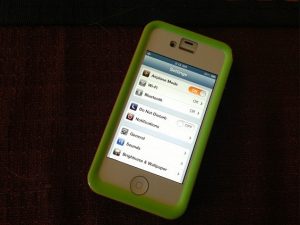 Shawn Achor writes in the Harvard Business Review that resilience requires more than resting. It requires recovery. What’s the difference?
Shawn Achor writes in the Harvard Business Review that resilience requires more than resting. It requires recovery. What’s the difference?
“So how do we recover and build resilience? Most people assume that if you stop doing a task like answering emails or writing a paper, that your brain will naturally recover, such that when you start again later in the day or the next morning, you’ll have your energy back. But surely everyone reading this has had times where you lie in bed for hours, unable to fall asleep because your brain is thinking about work. If you lie in bed for eight hours, you may have rested, but you can still feel exhausted the next day. That’s because rest and recovery are not the same thing. Stopping does not equal recovering.”
If you’re trying to build resilience at work, you need adequate internal and external recovery periods.
As researchers Zijlstra, Cropley and Rydstedt write in their 2014 paper: “Internal recovery refers to the shorter periods of relaxation that take place within the frames of the workday or the work setting in the form of short scheduled or unscheduled breaks, by shifting attention or changing to other work tasks when the mental or physical resources required for the initial task are temporarily depleted or exhausted. External recovery refers to actions that take place outside of work—e.g. in the free time between the workdays, and during weekends, holidays or vacations.” If after work you lie around on your bed and get riled up by political commentary on your phone or get stressed thinking about decisions about how to renovate your home, your brain has not received a break from high mental arousal states. Our brains need a rest as much as our bodies do.
If you really want to build resilience, you can start by strategically stopping.
Give yourself the resources to be tough by creating internal and external recovery periods. In her upcoming book The Future of Happiness, based on her work at Yale Business School, Amy Blankson describes how to strategically stop during the day by using technology to control overworking. She suggests downloading the Instant or Moment apps to see how many times you turn on your phone each day. The average person turns on their phone 150 times every day. If every distraction took only 1 minute, (which would be seriously optimistic), that would account for 2.5 hours of everyday.
 You can use apps like Offtime or Unplugged to create tech free zones by strategically scheduling automatic airplane modes. In addition, you can take a cognitive break every 90 minutes to recharge your batteries. Try to not have lunch at your desk, but instead spend time outside or with your friends — not talking about work.
You can use apps like Offtime or Unplugged to create tech free zones by strategically scheduling automatic airplane modes. In addition, you can take a cognitive break every 90 minutes to recharge your batteries. Try to not have lunch at your desk, but instead spend time outside or with your friends — not talking about work.
Take all of your paid time off, which not only gives you recovery periods, but raises your productivity and likelihood of promotion.”

